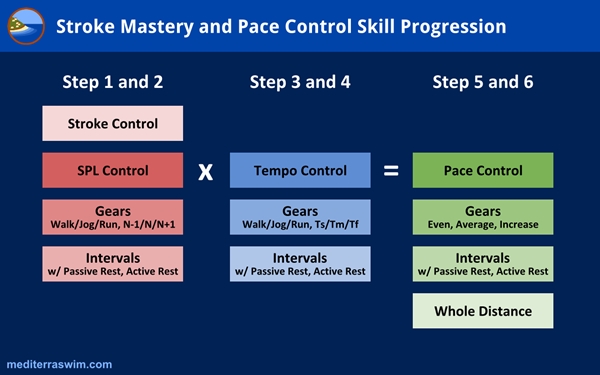Do you wonder if or how you are going to get better at your swimming?
Here is an equation:
Progress = Organization + Concentration + Effort
You understand that this is going to take effort. And, if you’ve been working with TI for a while, or especially been training under my coaching, you realize that your concentration, your quality of attention is key to making any improvement that you can control and replicate. And, you may appreciate by now how important having an organized approach to skill-building is. Total Immersion specializes in providing this organized and highly-refined approach to building your skill and higher performance.
But I need to add one more variable to this equation:
Progress = Organization + Concentration + Effort + Faith
Yes, Faith.
Faith = Trust (in this context, so we’ll use the words interchangeably).
If you really stop to think about it, you need to trust the explanations given to you for how the human body builds skill and fitness. After all, you cannot see the changes taking place inside your brain and inside your bodily systems when you practice. After some time, with understanding to interpret it, you may feel changes indirectly from bio-feedback, but a lot of the ‘roots’ for what makes you get better are quiet, hidden constructions happening in microscopic amounts as you practice and as you rest. Then one spring day, the tree has reached a tipping-point in those internal changes and bursts forth in new greenery and fruit. One day you slip in the pool and discover a capability that was not there the day before.

A lot of your improvement can be explained in that tree-and-season analogy. It is cyclical. There is a silent, hidden season of improvement when your roots are working their way deeper, and then periodically, there is a season of visible fruit = performance improvement (in terms of easier, farther, faster). And, there is a season of shedding old, insufficient habits and getting ready to build new ones.
And let’s develop that further – let’s aim for intelligent faith, which means we’ve got solid, convincing, well-supported explanations for how things works, though we cannot prove it to ourselves immediately. We’re going to trust someone to tell us this, but we’ve used some critical thinking and what he says makes good sense and resonates with other knowledge and experience we’ve already got. You’ve got to have this intelligent faith that this is really going to work in order to devote yourself to it, because… (continued in the next post).



